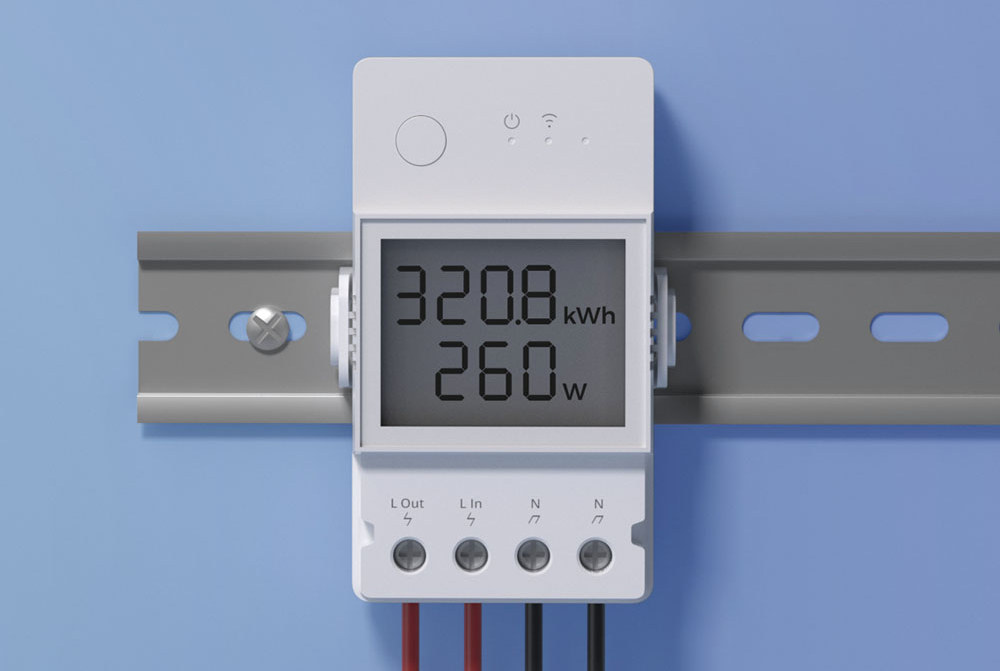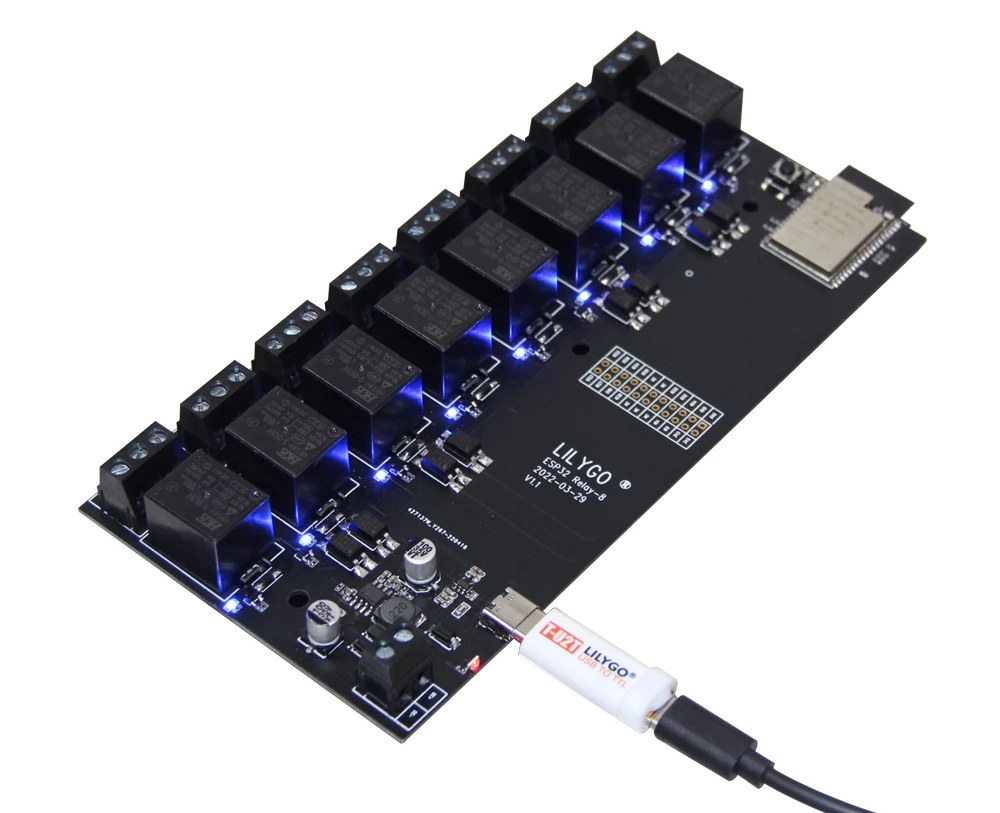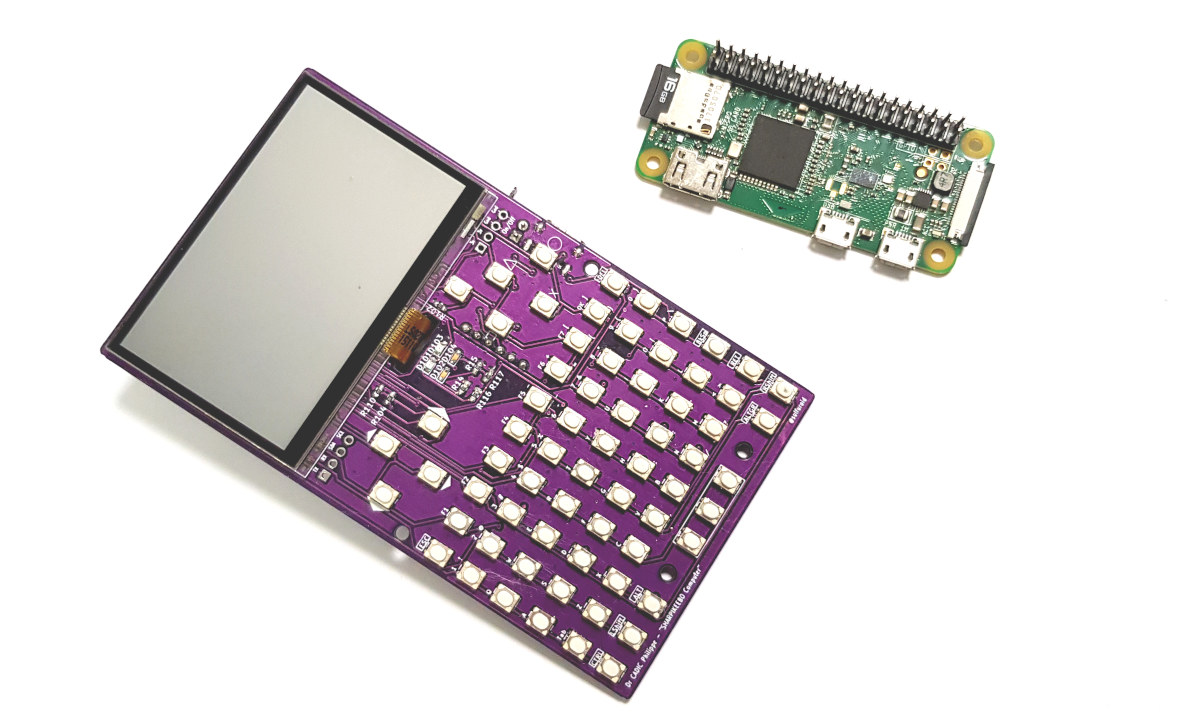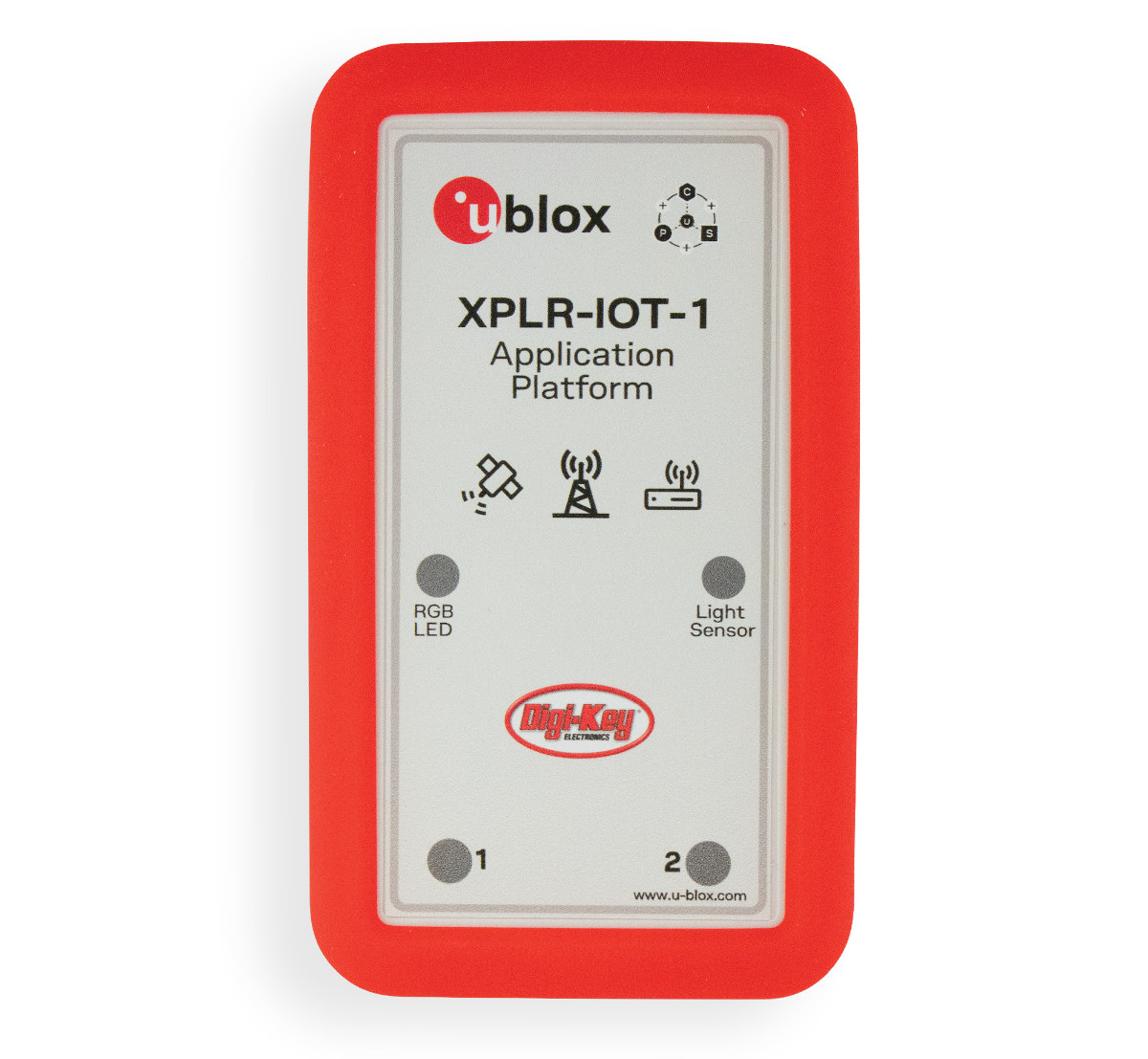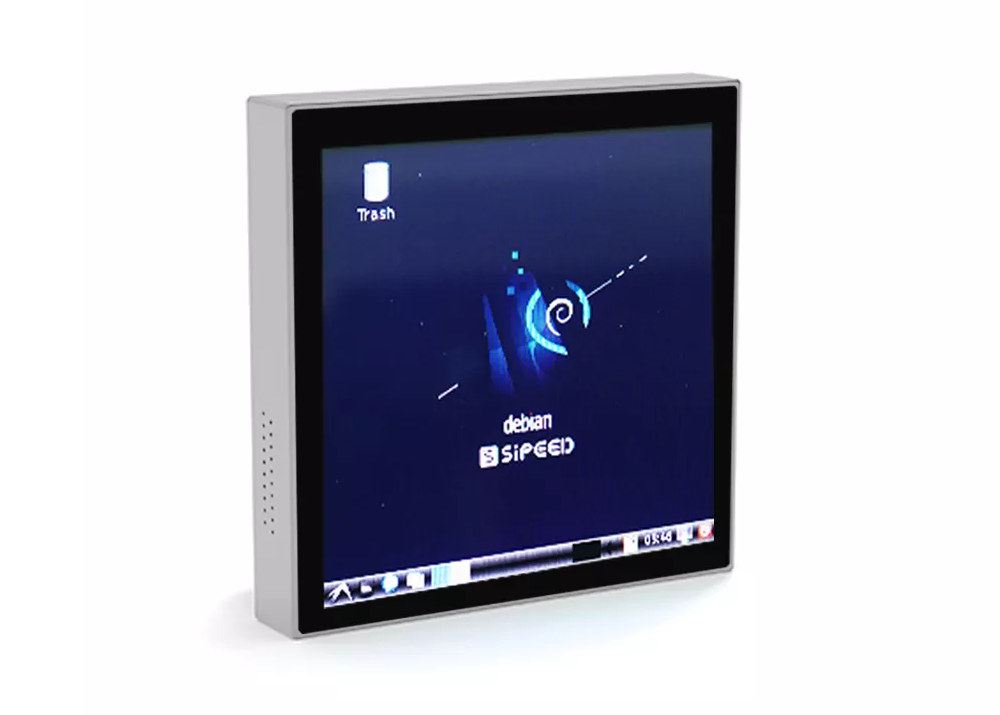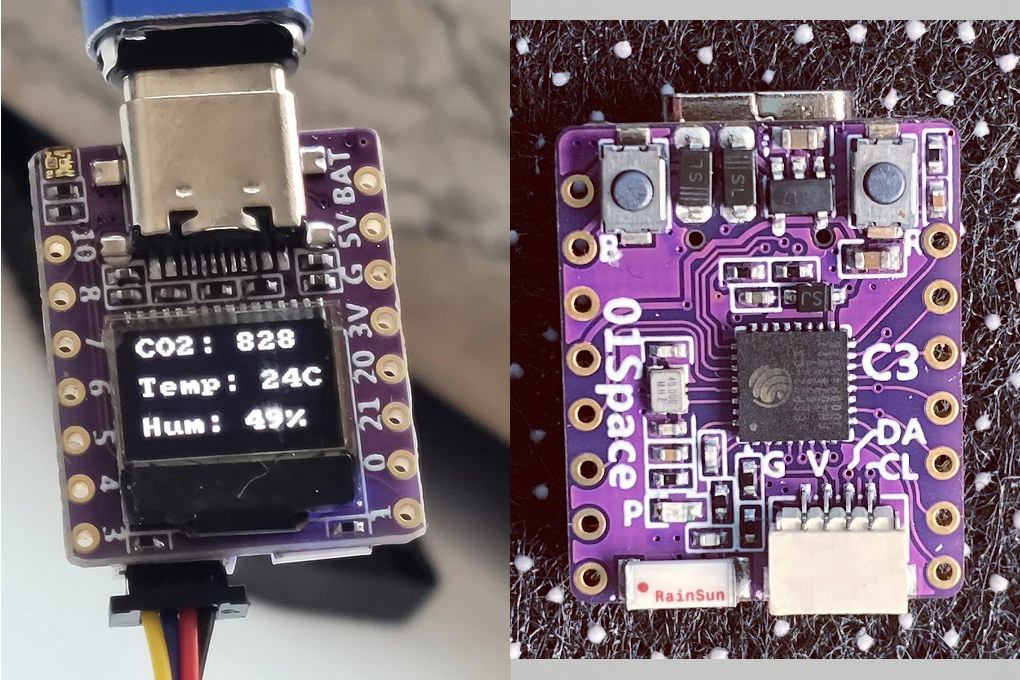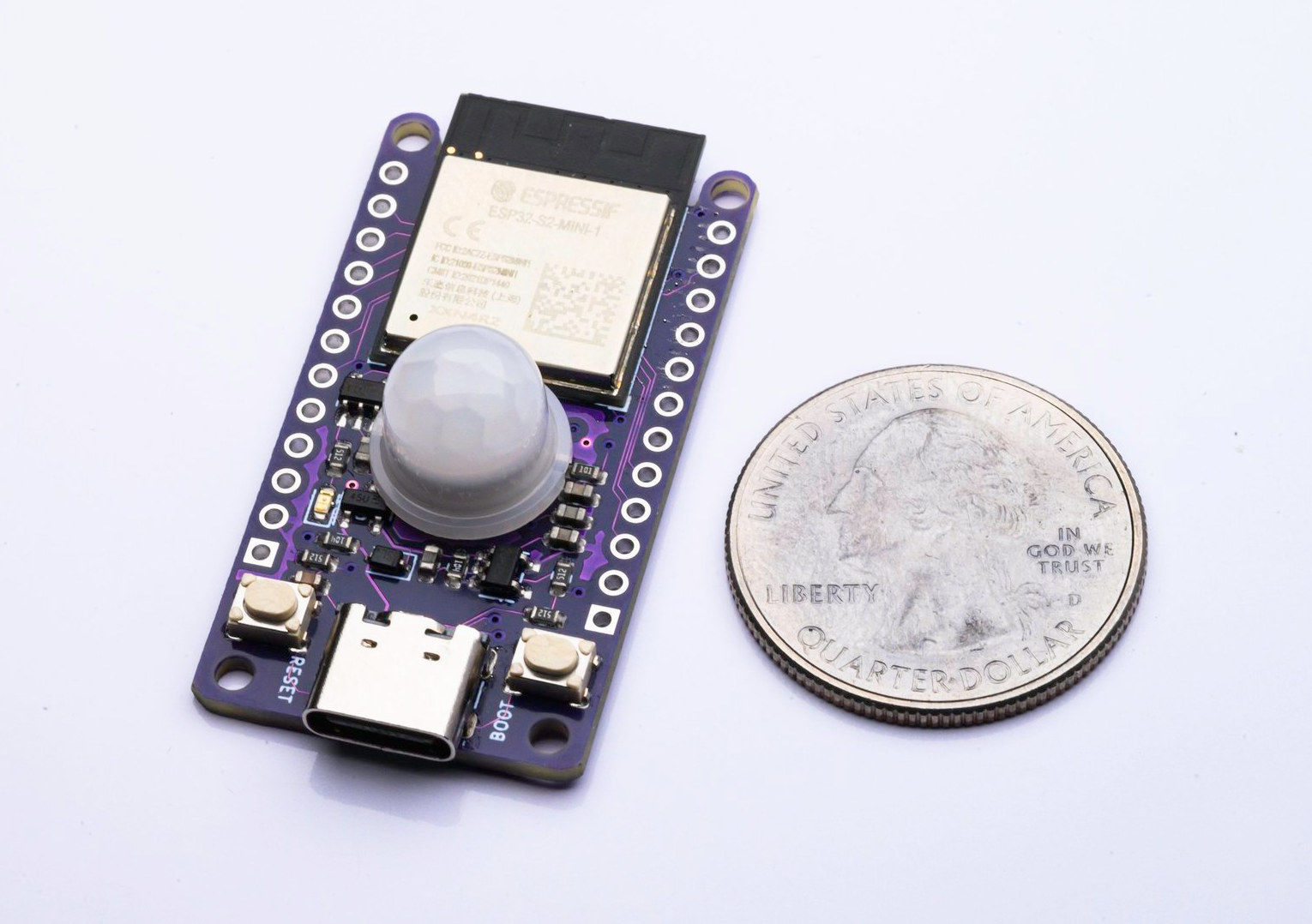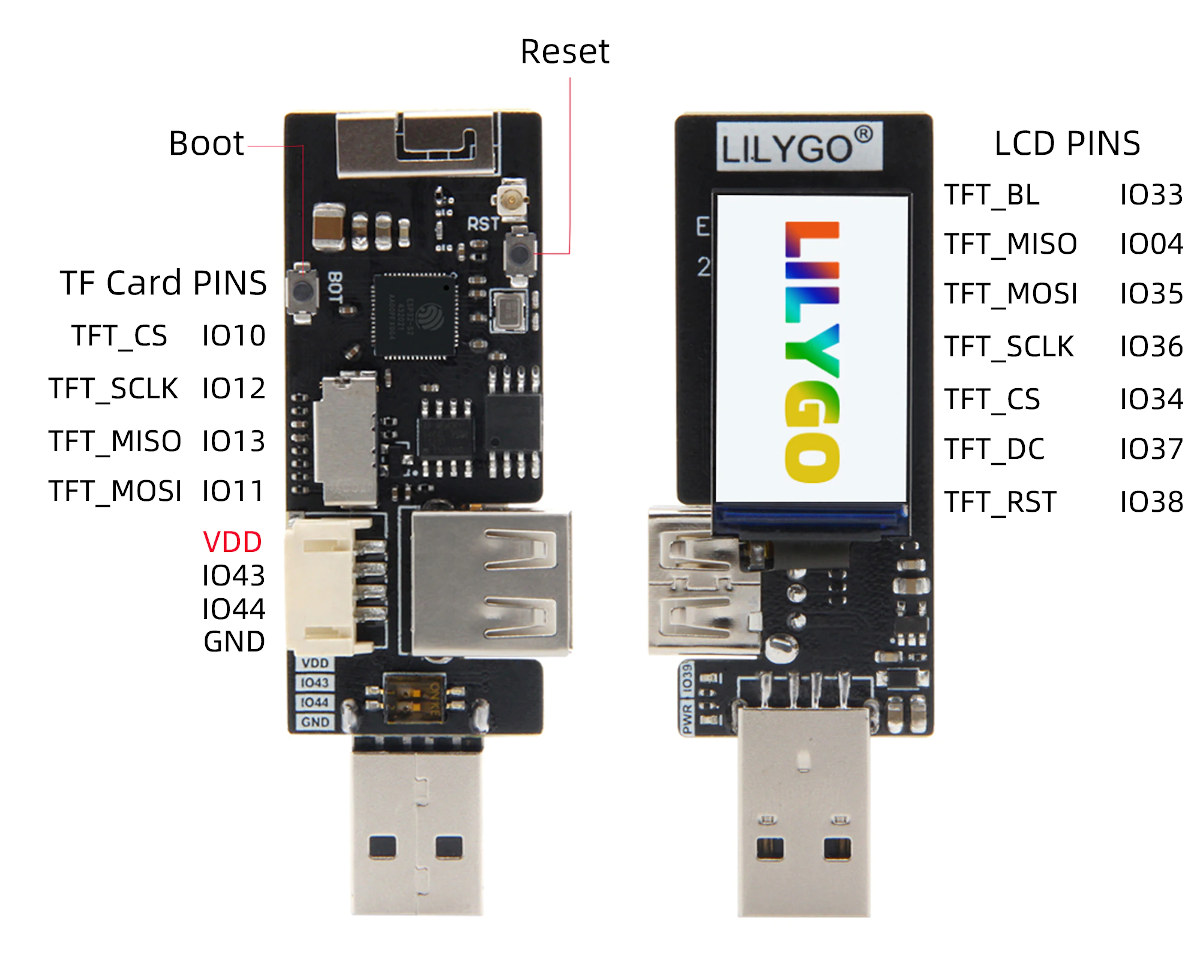SONOFF POW Elite is an ESP32-powered smart power meter switch that can handle up to 20A max load to monitor the power consumption of all appliances in a whole room. The data can be visualized in real-time on the built-in LCD or via the eWelink app, up to six-month of hourly power consumption history can be saved, and the system can also be integrated with third-party solutions such as a Home Assistant, IFTTT, and Alexa Energy dashboard. SONOFF POW Elite specifications: WiSoC – Espressif Systems ESP32 dual-core Xtenxa processor @ up to 240 MHz with 2.4 GHz WiFi 4 and Bluetooth 4.2 connectivity Wireless – 2.4GHz 802.11 b/g/n WiFi 4 (Bluetooth does not seem to be used) Power Input/Output POWR316D model – 100-240V~ 50/60Hz 16A Max POWR320D model – 100-240V~50/60Hz 20A Max Dimensions – 98 x 54 x 31mm (DIN Rail mountable) Casing Material – PC V0 (Tested with UL94v-0 […]
T-Relay-8 – An ESP32 board with 8 relays
LilyGo T-Relay-8 is an ESP32 WiFi & BLE board equipped with eight 5V relays supporting up to 250V AC or 28V DC, as well as 16-pin GPIO header for expansion. The board offers a more compact solution than the usual two-board setups with an ESP32 board and a separate 8-relay “Arduino” module, and also integrates optocouplers for improved safety. LilyGo T-Relay-8 specifications: Wireless module – ESP32-WROVER-E module with ESP32 dual-core processor with 2.4 GHz WiFi 4 and Bluetooth 4.2 connectivity, 4MB flash, 8MB PSRAM Relays – 8x HRS4H-S-DC5V 5V relays up to 250VAC/10A or 28VDC/10A with octocoupler isolation, blue LEDs for status Expansion – 16-pin header (unpopulated) with GPIOs, 3.3V, and GND USB – 1x USB Type-C for programming via optional T-U2T dongle via CH9102 USB to TTL chip Misc – Reset button, red user LED Power Supply – 12V to 24V via 2-pin terminal block Dimensions – 17 x […]
ShaRPiKeebo handheld Linux computer based on Raspberry Pi Zero (2) W ships with a LoRa radio (Crowdfunding)
Morpheans ShaRPiKeebo is a portable Linux computer based on Raspberry Pi Zero W or Zero 2 W SBC that reminds me of the Allwinner R8 powered PocketCHIP handheld computer that was introduced in 2016, and was quite popular (for a niche product) at the time. The ShaRPiKeebo comes with a physical QWERTY keyboard, a daylight-readable screen, and Wi-Fi & Bluetooth connectivity, but also adds a 433 MHz LoRa radio that should make it usable as an off-the-grid communicator. Just like PocketCHIP, the ShaRPiKeebo can be used for system administration, retro-gaming, pen testing, STEM education, and all sort of maker projects. ShaRPiKeebo specifications: Supported SBCs via 40-pin GPIO header – Raspberry Pi Zero W, Raspberry Pi Zero 2 W, and (maybe) compatible SBCs like Radxa Zero or Banana Pi M2 Zero Display – 2.7- inch SHARP memory display (LS027B7DH01) with 400×240 resolution, low-latency, low-power Connectivity 802.11 b/g/n WiFi 4, Bluetooth 4.2 […]
u-blox XPLR-IOT-1 explorer kit embeds cellular IoT, Wi-Fi, BLE, GNSS, and sensors for IoT evaluation
u-blox XPLR-IOT-1 explorer kit is an all-in-one IoT evaluation platform with cellular IoT, Wi-Fi, Bluetooth Low Energy, and GNSS, plus some sensors to evaluate various IoT products and enable proofs of concepts such as logistics container trackers, industrial automation, sensor-to-cloud applications, and fleet management solutions. The device’s main module is the u-blox NORA-B106 with a dual-core Arm Cortex M33 microcontroller and Bluetooth LE 5.2 radio that host the application software and control the other modules, namely the SARA-R510S module for LTE-M and NB-IoT cellular connectivity, NINA-W156 2.4 GHz Wi-Fi module, and the MAX-M10S GNNS module. The XPLR-IOT-1 platform is also equipped with an accelerometer, a gyroscope, a magnetometer, and temperature, humidity, pressure, and ambient light sensors. u-blox XPLR-IOT-1 specifications: Main MCU – Nordic Semi nRF5340 dual-core Arm Cortex M33 @ 128/64 MHz with 512 + 64 kB RAM memory and 1024 + 256 kB flash (found in NORA-B106 module) Wireless […]
Lichee RV-86 RISC-V Linux 4-inch panel targets home automation, HMI applications
When Sipeed first introduced the Lichee RV module with Allwinner D1 RISC-V SoC last November, they also teased the Lichee RV-86, an “86 Box” with a 4-inch 480×480 touchscreen display, an XR829 WiFi and Bluetooth module, Ethernet (via USB), two microphones, a GPIO header, and support for WAFT (WebAssembly Framework for Things). I’ve just noticed the Lichee RV-86 has been for sale for several months, so it may be interesting to have a closer look, and now there’s also an option to get a 720×720 touchscreen display. Lichee RV-86 specifications: SoM – Sipeed Lichee RV Nezha compute module with Allwinner D1 RISC-V processor @ 1 GHz, 512MB or 1GB DDR3, microSD card slot, and USB Type-C OTG port Display 4-inch 480×480 IPS capacitive touch screen OR 4-inch 720×720 IPS capacitive touch screen It is also possible to connect an 8-inch 1280*800 IPS capacitive touch screen to the board Audio – […]
“ESP32-C3-0.42LCD” is a tiny WiFi & BLE IoT board with 0.42-inch display, Qwiic connector
01Space “ESP32-C3-0.42LCD” is a small (23.5 x 18 mm) board equipped with ESP32-C3 RISC-V WiFi and Bluetooth microcontroller, a 0.42-inch display, and a Qwicc I2C connector to easily add modules such as sensors. The first time I saw it, the form factor immediately reminded me of the nRF52840-based XIAO BLE Sense board I just used to test Edge Impulse machine learning framework. Both boards should have similar use cases, but XIAO BLE Sense includes a 6-axis IMU sensor, and I had to connect an OLED display, while the ESP32-C3 board already integrates a display, and I would have had to connect an external Qwicc module with an accelerometer. ESP32-C3-0.42LCD specifications: SoC – ESP32-C3FH4 SoC with RISC-V core @ 160 MHz, 4MB flash, 2.4GHz Wi-Fi, and Bluetooth 5 LE with Long-Range support Ceramic antenna Display – 0.42-inch LCD USB – 1x USB Type-C port for power and programming Expansion Qwiic I2C connector […]
Bee Motion ESP32-S2 PIR motion sensor offers GPIOs, over a year of battery life
Smart Bee Designs’ Bee Motion is an ESP32-S2 board with a PIR motion sensor, some GPIOs for expansion, and promising over a year of battery life under the right circumstances. If the name “Bee Motion” rings a bell, it’s because we covered the Bee Motion Mini board last month with an ESP32-C3 processor and a PIR sensor, but no USB port for programming and no expansion ability. It was just designed to be used as a battery-powered wireless PIR motion sensor. The Bee Motion expands the use cases of the solution, although it only features WiFi connectivity, and loses Bluetooth LE. Bee Motion specifications: Wireless module – Espressif ESP32-S2-MINI-1 module with Espressif ESP32-S2FH4 single-core 32-bit LX7 microcontroller @ up to 240 MHz, RISC-V ultra-low-power co-processor, 320 kB SRAM, 128kB ROM, 2.4 GHz WiFi 4 connectivity, 4MB flash, PCB antenna PIR sensor – Passive infrared motion sensor with dome lens, 5-meter […]
T-Dongle ESP32-S2 WiFi development board comes with two USB OTG ports
LilyGO has been very busy in recent weeks, and their latest product is the “T-Dongle ESP32-S2” development board that looks very much like Espressif ESP32-S3-USB-OTG board development board but is equipped with the single-core WiFi-only ESP32-S2 processor instead of the dual-core ESP32-S3 SoC with WiFi 4 and Bluetooth 5.0. The T-Dongle ESP32-S2 board is designed for the development of USB applications and comes with USB OTG female and male ports, as well as the same 1.14-inch color display found on T-Display RP2040/ESP32 and T-PicoC3 boards. T-Dongle ESP32-S2 development board specifications: Wireless SoC – Espressif Systems ESP32-S2 single-core Xtensa LX7 processor @ up to 240 MHz with 320 kB SRAM, 128 kB ROM, WiFi 4 connectivity Antennas – 3D antenna, IPEX antenna connector Storage – MicroSD card socket Display – 1.14-inch full-color IPS LCD Display (ST7789V SPI controller) with 240 x 135 resolution USB 1x USB OTG female port to connect […]


